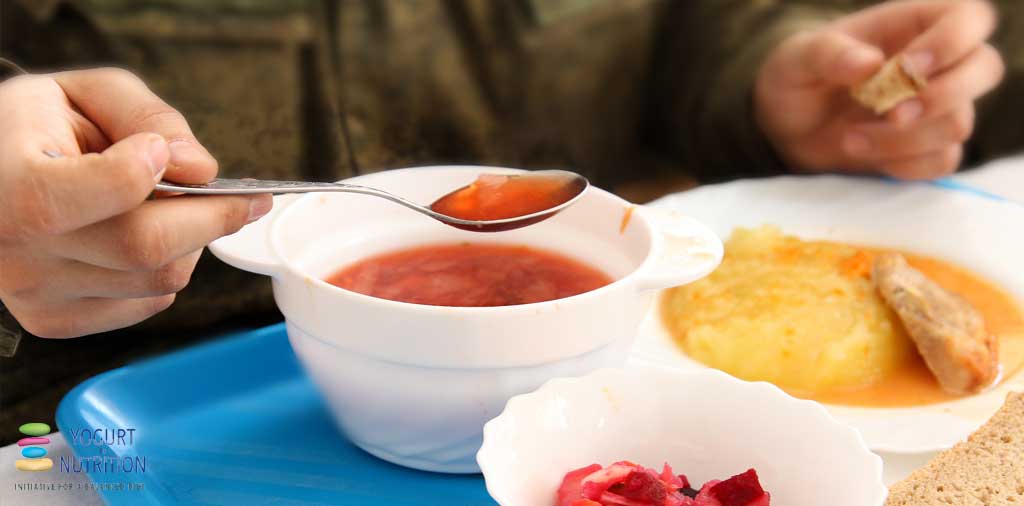A few simple steps to change the way we present our food can make all the difference when it comes to healthy choices. That’s the finding of a dietary programme carried out in a large group of soldiers, whose eating habits were improved without making their meals any less tasty. And a key player in their improved diet was yogurt.
For soldiers to stay fighting-fit they need to eat a healthy, performance-enhancing diet. But, like many of us, military personnel don’t tend to have a good track record when it comes to choosing the foods that are best for them. In particular, they eat less fruit and veg and more saturated fats and added sugars than they should according to dietary recommendations.
So in a bid to steer soldiers towards healthy food choices that optimise their performance, the US Army has set up the Special Operations Forces Human Performance Program. This is a nutrition intervention scheme based on menu standards and guidance developed jointly by the Army, Navy and Air Force. A study to test the effectiveness of the scheme is reported in this article.
Nutrient-dense foods such as yogurt were strategically placed
The programme was implemented in the dining facility of an army base catering for hundreds of soldiers. Healthy performance-optimising meals and high-quality nutrient-dense foods such as yogurt, walnuts, kale and quinoa were offered or incorporated into recipes for each meal in a 21-day meal cycle. At the same time, saturated fats were reduced in food preparation.
The high-quality foods were placed strategically in a way that they could be easily seen and accessed by the soldiers as they collected their meal. Hence the healthy foods were at the beginning of the serving line while high fat, nutrient-poor foods were at the end of the line.
By photographing the foods chosen, the authors compared the diets of soldiers in the intervention facility with those eating at another base that was not carrying out the scheme. They collected data before the intervention began, then at 4 months, 8 months and 12 months to see if any changes persisted.
Healthier meals, and just as enjoyable
Results showed that, although there was still room for improvement, the intervention programme improved the soldiers’ diet quality. These improvements persisted at least 4-12 months after the intervention programme. Using the Healthy Index, a standard way of measuring diet quality, they found that the intervention group scored 11 points higher than the control group.
The improved scores in the intervention soldiers reflected their switch away from calorie-dense meals and towards more nutrient-dense foods, particularly yogurt, fruit, legumes and red and orange vegetables.
Despite the soldiers’ concerns at the start of the programme, the improvements in diet quality were achieved without compromising their meal satisfaction. In fact, the intervention soldiers’ satisfaction increased for 11 of 17 ratings over the course of the study, say the authors.
‘Incorporating high-quality food ingredients and recipes within the military dining facility menu cycle may improve diet quality of military patrons.’ – Cole RE et al, 2018.
Learning about healthy food choices
Before starting the new menu regime, the soldiers in the intervention group had 5 hours of nutrition education on eating for health and resilience, and this was found to contribute to their healthy choices.
However, colour-coded labelling of foods to show their health value did not add to this positive effect on diet quality, perhaps because training wasn’t given on how to use the labelling system to maximise food choice, say the authors.
They conclude that widespread adoption of the programme across the military may lead to overall improved diet quality for these soldiers, although for military-wide adoption adjustments would be needed to make sure it’s economically feasible.



